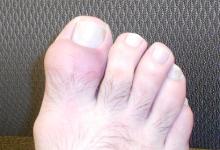AS Diagnosis Linked to CVD Risk Save

Prevalent patients with ankylosing spondylitis (AS) face a 30–50% increased risk of acute coronary, cerebrovascular, and thromboembolic events compared with the general population.
But although an AS diagnosis appears to increase relative risk for cardiovascular events, that increase is not as great as the relative risk observed among patients with rheumatoid arthritis (RA).
The study, published in the Annals of the Rheumatic Diseases followed one cohort each of prevalent patients with AS (n=5358), RA (n=37,245), and the general population (n=25,006).
Based on the 69 acute coronary events that occurred during the 20,251 collective person-years of follow-up on the patients with AS and the 966 events that took place during 127,014 person-years in the RA cohort, the age- and sex-adjusted relative risks for these events when compared with the general population was 1.3 (95% CI 1.0-1.7) for AS patients and 1.7 (CI 1.4-2.0) in those with RA.
For thromboembolic events, the risks were 1.4 (CI 1.1-1.9) for AS patients and 1.8 (CI 1.5-2.1) for patients with RA. For stroke, relative risks were 1.5 (CI 1.1-2.0) in AS patients and 1.5 (CI 1.2-1.8) for RA patients compared.
According to study authors, two of the three risk increases fall inside previously reported ranges, but the third does not.
"Our 30% increase in risk for [acute cardiovascular syndromes] is within the range of previously reported estimates," wrote Jonas Eriksson of the Karolinska Institutet in Stockholm, Sweden, and colleagues. "For other incident cardiovascular endpoints, such as stroke, reported risks have ranged from non-elevated to 140% increased. Again our 50% increase in risk is thus within the broad range of previously reported risks. For other cardiovascular endpoints, such as thromboembolic endpoints, the existing literature is scarce; hence, our finding of a 40% increase in risk is difficult to benchmark."
Eriksson and colleagues also observed that patterns in cardiovascular event comorbidities and medications were "reasonably similar" between AS and RA populations.
One independent investigator indicated that a smaller-scale study may be needed to best understand the patterns raised in the study.
"This paper calls for a nuanced discussion," Nortin Hadler, MD, an emeritus professor of microbiology/immunology at the University of North Carolina at Chapel Hill, wrote in an email. "It demonstrates all the challenges of attempting to draw clinical inferences from large administrative data sets. It is almost impossible to end up with reproducible, let alone valid conclusions. Nonetheless, this is an exercise that is all too feasible and therefore all too seductive."
Moving forward, Eriksson and colleagues suggested studies that "assess risks related to accumulated disease severity or treatment."







If you are a health practitioner, you may Login/Register to comment.
Due to the nature of these comment forums, only health practitioners are allowed to comment at this time.